HVAC systems play a critical role in creating a green building. Here are some detailed strategies for incorporating HVAC into a green building design:
Green Building HVAC Strategies and Benefits
| Strategy | Description | Estimated Energy Reduction (%) | Image |
|---|---|---|---|
| High-Efficiency Equipment (SEER 18 or higher) | Air conditioners with variable-speed compressors and two-stage cooling. Gas furnaces with AFUE ratings of 95% or higher. | 20-40% | 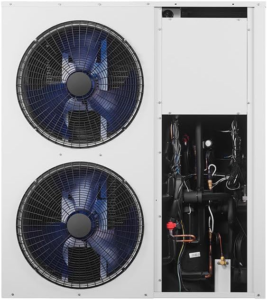 |
| Airflow Optimization | Sealing and insulating ducts, regular cleaning to minimize air leaks and maximize airflow efficiency. | 10-20% | 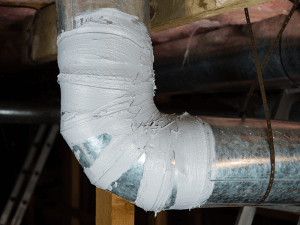 |
| Demand-Controlled Ventilation (DCV) | Adjusts ventilation based on occupancy and CO2 levels. | 15-30% | 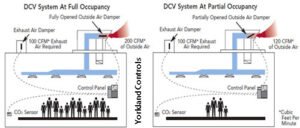 |
| Heat Recovery Ventilation (HRV) | Captures heat/coolth from exhaust air and transfers it to incoming fresh air. | 10-20% | 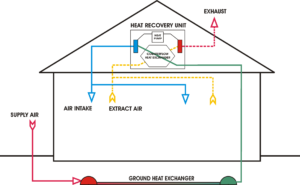 |
| Natural Ventilation Strategies | Operable windows, light shelves, and stack ventilation for fresh air and reduced reliance on mechanical systems. | Up to 50% (depending on climate) | 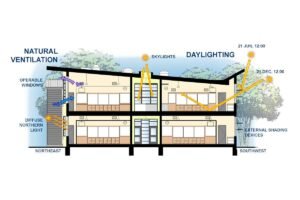 |
| Ground-Source Heat Pumps (GSHPs) | Utilizes the earth’s stable temperature for heating and cooling. | 30-60% | 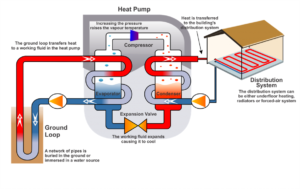 |
| Building Automation Systems (BAS) | Monitors and controls HVAC based on real-time building conditions and occupant needs. | 10-20% | 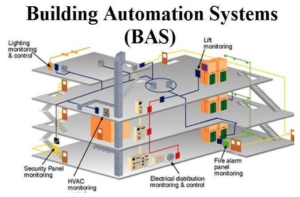 |
Additional Considerations
In addition to the HVAC strategies listed above, several other factors contribute to creating a green building:
| Strategy | Description | Benefits |
|---|---|---|
| Building Envelope Optimization | Well-insulated and air-sealed walls, roof, and foundation. | Reduces heat transfer, lowers HVAC workload. |
| Material Selection | Sustainable and low-emitting building materials. | Improves indoor air quality, potentially reduces ventilation needs. |
| Building Orientation and Landscaping | South-facing windows for winter solar heat gain, strategic landscaping for shade. | Minimizes heating/cooling demand. |
Benefits of Green HVAC Systems
By implementing these green HVAC strategies, you can achieve several benefits for your building:
| Benefit | Description |
|---|---|
| Reduced Energy Consumption and Costs | Lower energy use translates to lower operating costs. |
| Improved Indoor Air Quality | Clean and healthy air fosters a comfortable and productive environment. |
| Reduced Environmental Impact | Lower energy use and potentially renewable energy sources contribute to a smaller carbon footprint. |
| Building Sustainability | Promotes resource conservation and environmental responsibility. |
In conclusion, HVAC systems are a major factor in green building design. By carefully considering these strategies and incorporating them into your building plans, you can create a more energy-efficient, environmentally friendly, and comfortable structure.
Looking to install a commercial HVAC System or Duct work in your Business Area?
Contact Vipul Ac to learn about our HVAC Service
Call +91 9825636606 Today.
